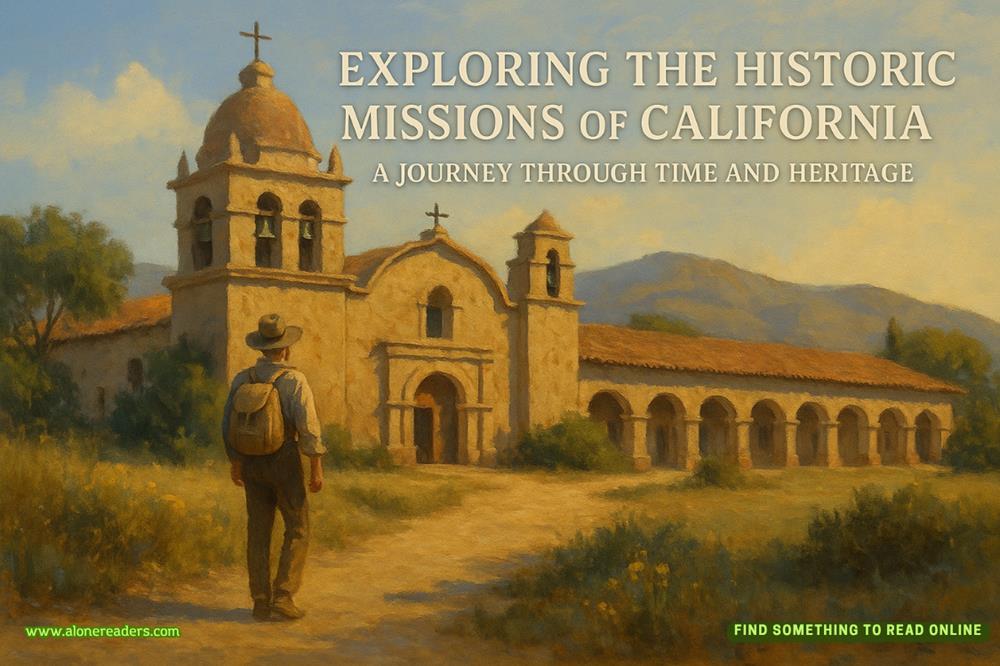Page 270 of The Pillars of the Earth
PART FIVE
1152-1155
Chapter 14
I
AFTER SEVEN YEARS Jack had finished the transepts—the two arms of the cross-shaped church—and they were everything he had hoped for. He had improved on the ideas of Saint-Denis, making everything taller and narrower—windows, arches, and the vault itself. The clustered shafts of the piers rose gracefully through the gallery and became the ribs of the vault, curving over to meet in the middle of the ceiling, and the tall pointed windows flooded the interior with light. The moldings were fine and delicate, and the carved decoration was a riot of stone foliage.
And there were cracks in the clerestory.
He stood in the high clerestory passage, staring out across the chasm of the north transept, brooding on a bright spring morning. He was shocked and baffled. By all the wisdom of the masons the structure was strong; but a crack showed a weakness. His vault was higher than any other he had ever seen, but not by that much. He had not made the mistake of Alfred, and put a stone vault on a structure that was not built to take the weight: his walls had been designed for a stone vault. Yet cracks had appeared in his clerestory in roughly the same place where Alfred’s had failed. Alfred had miscalculated but Jack was sure he had not done the same thing. Some new factor was operating in Jack’s building and he did not know what it was.
It was not dangerous, not in the short term. The cracks had been filled with mortar and they had not yet reappeared. The building was safe. But it was weak; and for Jack the weakness spoiled it. He wanted his church to last until the Day of Judgment.
He left the clerestory and went down the turret staircase to the gallery, where he had made his tracing floor, in the corner where there was a good light from one of the windows in the north porch. He began to draw the plinth of a nave pier. He drew a diamond, then a square inside the diamond, then a circle inside the square. The main shafts of the pier would spring from the four points of the diamond and rise up the column, eventually branching off north, south, east and west to become arches or ribs. Subsidiary shafts, springing from the corners of the square, would rise to become vaulting ribs, going diagonally across the nave vault on one side and the aisle vault on the other. The circle in the middle represented the core of the pier.
All Jack’s designs were based on simple geometrical shapes and some not-so-simple proportions, such as the ratio of the square root of two to the square root of three. Jack had learned how to figure square roots in Toledo, but most masons could not calculate them, and instead used simple geometric constructions. They knew that if a circle was drawn around the four corners of a square, the diameter of the circle was bigger than the side of the square in the ratio of the square root of two to one. That ratio, root-two to one, was the most ancient of the masons’ formulas, for in a simple building it was the ratio of the outside width to the inside width, and therefore gave the thickness of the wall.
Jack’s task was much complicated by the religious significance of various numbers. Prior Philip was planning to re-dedicate the church to the Virgin Mary, because the Weeping Madonna worked more miracles than the tomb of Saint Adophus; and in consequence they wanted Jack to use the numbers nine and seven, which were Mary’s numbers. He had designed the nave with nine bays and the new chancel, to be built when all else was finished, with seven. The interlocked blind arcading in the side aisles would have seven arches per bay, and the west facade would have nine lancet windows. Jack had no opinion about the theological significance of numbers but he felt instinctively that if the same numbers were used fairly consistently it was bound to add to the harmony of the finished building.
Before he could finish his drawing of the plinth he was interrupted by the master roofer, who had hit a problem and wanted Jack to solve it.
Jack followed the man up the turret staircase, past the clerestory, and into the roof space. They walked across the rounded domes that were the top side of the ribbed vault. Above them, the roofers were unrolling great sheets of lead and nailing them to the rafters, starting at the bottom and working up so that the upper sheets would overlap the lower and keep the rain out.
Jack saw the problem immediately. He had put a decorative pinnacle at the end of a valley between two sloping roofs, but he had left the design to a master mason, and the mason had not made provision for rainwater from the roof to pass through or under the pinnacle. The mason would have to alter it. He told the master roofer to pass this instruction on to the mason, then he returned to his tracing floor.
He was astonished to find Alfred waiting for him there.
He had not spoken to Alfred for ten years. He had seen him at a distance, now and again, in Shiring or Winchester. Aliena had not so much as caught sight of him for nine years, even though they were still married, according to the Church. Martha went to visit him at his house in Shiring about once a year. She always brought back the same report: he was prospering, building houses for the burgers of Shiring; he lived alone; he was the same as ever.
But Alfred did not appear prosperous now. Jack thought he looked tired and defeated. Alfred had always been big and strong, but now he had a lean look: his face was thinner, and the hand with which he pushed the hair out of his eyes was bony where it had once been beefy.
He said: “Hello, Jack.”
His expression was aggressive but his tone of voice was ingratiating—an unattractive mixture.
“Hello, Alfred,” Jack said warily. “Last time I saw you, you were wearing a silk tunic and running to fat.”
“That was three years ago—before the first of the bad harvests.”
“So it was.” Three bad harvests in a row had caused a famine. Serfs had starved, many tenant farmers were destitute, and presumably the burghers of Shiring could no longer afford splendid new stone houses. Alfred was feeling the pinch. Jack said: “What brings you to Kingsbridge after all this time?”
“I heard about your transepts and came to look.” His tone was one of grudging admiration. “Where did you learn to build like this?”
“Paris,” Jack said shortly. He did not want to discuss that period of his life with Alfred, who had been the cause of his exile.
“Well.” Alfred looked awkward, then said with elaborate indifference: “I’d be willing to work here, just to pick up some of these new tricks.”
Jack was flabbergasted. Did Alfred really have the nerve to ask him for a job? Playing for time, he said: “What about your gang?”
“I’m on my own now,” Alfred said, still trying to be casual. “There wasn’t enough work for a gang.”
“We’re not hiring, anyway,” Jack said, equally casually. “We’ve got a full complement.”
“But you can always use a good mason, can’t you?”
Jack heard a faint pleading note and realized that Alfred was desperate. He decided to be honest. “After the life we’ve had, Alfred, I’m the last person you should come to for help.”















